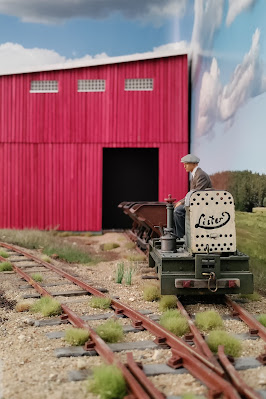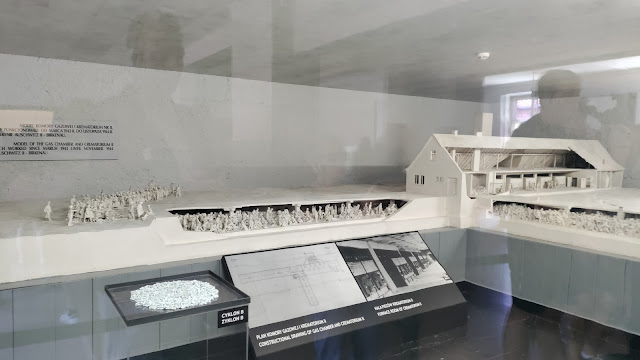So far the only animal having been seen around the small gravel line in Nystrup has been a shunting horse. The railway yard wasn't a natural habitat for many larger animals, but a fox or two made regular appearances straying from the nearby forest. That's why I had a pair of foxes in the package from Modelu last time I ordered figures.
 |
| Always on guard a fox cautiously approaches the open ground next to the lorry loading ramp. The fox measures 2 cm. over the shoulders and 7 cm. from nose to tail. |
The fox from the Modelu set 31101 was intially removed from the maze of printing supports and with a sanding stick I could remove the few attachment points remaining on the figure. A few unnatural looking indentations were filled with model filler. After priming with Games Workshop 'Chaos Black' I stippled on a covering of acryllic paint: Humbril 113 'Rust', Vallejo 818 'Red Leather' 70.983 'Flat Earth' (the paint's name makes you think, doesn't it?) and 70837 'Pale Sand'. The stipple method gives a slightly rough surface and a random application of paint allowing underlaying paint to partially show through. I found it extremely difficult to choose colours for the fox and to add depth to the animal's fur.
Once resonably satisfied with the painting, I added a faded mix of Red Leather and Pale Sand to the fox's upper back and a dry brushing of the rest of the animal. When dry I gave the red areas a wash of heavily diluted rust coloured oil paint. Eyes and mouth were added with black oil paint. Finally the nose was topped off with gloss black paint.
 |
| Painting the fox was part of my summer cottage project portfolio accompanying the 1/87 scale TU4 locomotive. |
 |
| Something has obviously caught the attention of the fox. It has remained stationary and vigilant for a long time. The workers have left the area so the fox may have found interesting prey? |
It's nice to be able to begin adding some of the fine detail to the layout. The fox from Modelu will be moving around on the layout in the future to add a little life.















